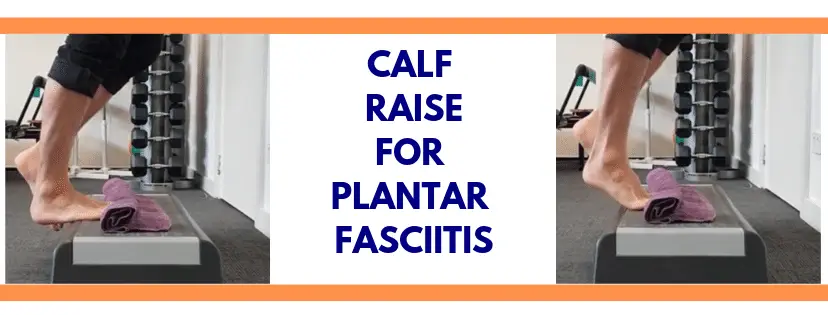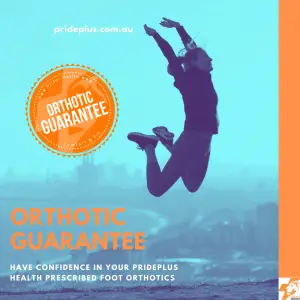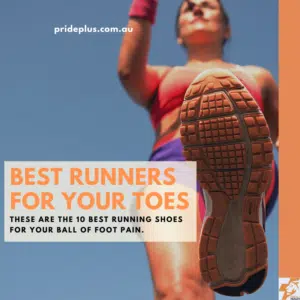Plantar fasciitis. AKA Plantar fasciopathy is a pain at the bottom of the heel that affects around 1 in 10 of us. It causes not just a sore heel, but can also significantly reduce our quality of life by decreasing our ability to be active. This heel pain can often become persistent and a cause of chronic pain.
If you’re not sure of the cause of your heel pain you can find out in under one minute with our free online heel pain test.
The good news is that with years of research into this common problem the solution for most of us is two-fold and simple. Let’s share some podiatry secrets.
How To Get Rid Of Plantar Fasciitis In 2 Steps.
Step 1: Optimise Load
Painful plantar fasciitis occurs when we ask the plantar fascia to do more than it can handle on a day to day basis. The exact reason for this is usually multifactorial, and you get the best results (the quickest and greatest symptom relief) when you address the factors which are most related to your plantar fasciitis. This does require a deeper understanding and assessment by an expert podiatrist.
The basic factors contributing to loading are:
- Tensile Loading: The pulling or stretching of the plantar fascia during heel-strike to midstance
- Compressive Loading: The type of load the plantar fascia hates, where it gets twisted as the heel tilts (or inverts) during midstance – propulsion or via inappropriate soles of footwear
- Repetitive Loading: Occurs with a combination of both of the above, or just one of them happening over and over again.
- Shoes: Some footwear increases the load on the plantar fascia, and others can decrease load
- Bodyweight: The heavier we are, the greater the load on the plantar fascia
To optimise the load on your plantar fascia you need to take if from it’s painful overloaded state, back to its comfort zone.
To optimise load you can:
- Strap: Use a rigid sports tape and strap your foot to reduce loading on the plantar fascia.
- Shoes: Footwear which has excellent midsole stability and a mild-moderate pitch (or drop) will reduce the load on the plantar fascia. ie, a stiffer shoe with a small heel.
- Orthotics: An orthotic can reduce the load on the plantar fascia. Considering the variation in orthotic design, it’s best to have a podiatrist guide you on this journey.
- Step Count: The more steps taken, the more work done by the plantar fascia. In the short term reducing the amount you do on your feet can be helpful in reducing symptoms. However, this short term reduction in activity should be just that. Short term. As your symptoms improve, that step count should increase accordingly. Although dropping this to zero steps, or maintaining reduced step counts long term will lead to many other negative health consequences
How To Get Rid Of Plantar Fasciitis In 2 Steps
Step 2: Increase Capacity
Again considering that plantar fasciitis occurs when we work (or load) our plantar fascia outside its capacity, it makes sense that increasing this capacity would allow us to get rid of painful plantar fasciitis – and importantly, reduce the likelihood of it returning over time.
The best way to increase the capacity of the plantar fascia is to strengthen it with heavy, slow resistance training. The plantar fascia shares many properties with muscles and tendons so taking it through a loading program will lead to increased capacity. An example of this is to modify a calf raise program so that your body is the weight, and slow, steady movements load up the plantar fascia.
You can do this by placing a rolled towel on the edge of a step, and then standing with your toes on the towel, the ball of your foot on the step, with your heel hanging free. Next, slowly raise, hold and lower, taking up to 4 seconds for this movement to occur. Focus on balance through your big toe, and not leaning out onto your little toes. This movement can be a little uncomfortable, if it’s sore then it’s too great of a load. If you feel you can do this easily then you need to make it harder. You can do this by completing the exercise on one foot at a time, adding more weight via a back-pack.

Find a set and rep range that feels comfortably challenging, and progress to include more reps as you feel stronger. As a starting point try 2 x 10 repetitions on two feet.
Best results come from a program that is designed specifically to your strengths and movement patterns. Book in with an expert podiatrist for assessment and guidance. The above information is only to be used as general interest information, not for clinical applications.
The only other way we can increase the capacity of our plantar fascia is to avoid or manage factors which would lead to decreased capacity. These include diabetes, particularly poorly controlled diabetes. Smoking. Physical Inactivity. Some antibiotics and anti-inflammatory medications.
Let’s Recap How To Get Rid Of Plantar Fasciitis In 2 Steps
Step 1: Optimise Load
- Including strapping, shoe changes, orthotics, activity modifications, gait training
Step 2: Increase capacity
- Completing appropriate strength exercises
Anything Else To Get Rid Of Plantar Fasciitis?
There are a few 1 %ers which can also influence the sensation of pain from plantar fasciitis. These include massage, either via a myotherapist or self-massage with your thumb or spiky ball, golf ball etc. Then there is dry needling that can be an effective symptom modifier for some people. Passive stretching can have a small effect on some people as well. Extracorporeal shockwave therapy has shown a small effect for people with longstanding plantar fasciitis who have not responded to load optimisation and capacity building. Cortisone steroid injections have shown short term pain improvements (with risks and side effects) however no benefit vs. other options after 3 months.
Do you have painful plantar fasciitis that you want to get rid of?
Book in with our expert podiatrists to work out which factors are the most relevant for you and get a management plan that will work.
Appointments are currently available in Melbourne CBD and Pascoe Vale.
You can book online here for all clinics.




